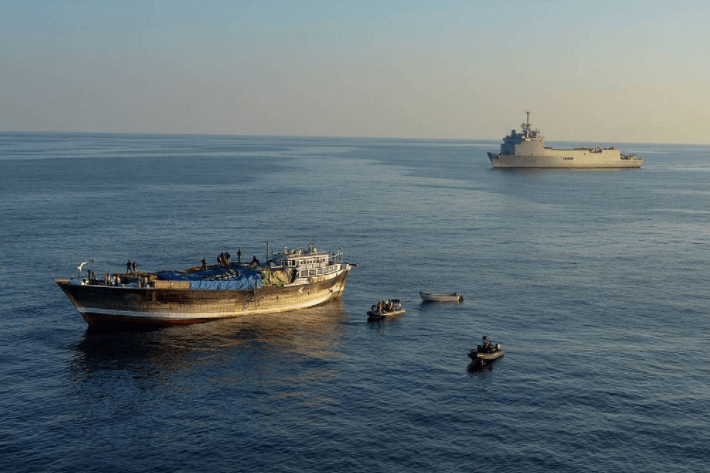With a continued downward trend in Somali piracy incidents, a group of the leading shipping organizations have agreed to reduce the geographic boundaries of the ‘High Risk Area’ in the Indian Ocean.
In broad terms, the changes agreed by BIMCO, ICS, INTERCARGO, INTERTANKO, and OCIMF, representing the global shipping and oil industries, will reduce the HRA boundaries to the Yemeni and Somali Territorial Seas and Exclusive Economic Zones in its eastern and southern reaches. The changes will apply from 1 September 2021.
The organizations, in consultation with international partners, will also take a comprehensive new approach to assessing international maritime security threats to allow shipowners and operators to fully gauge the risk of voyages worldwide. This second step is expected to be completed by 31 December.
The HRA was created at the height of the Somali piracy threat in 2010 to show shipowners, operators, and seafarers where pirates operated and where extra vigilance was required to avoid attacks.
Updates to the HRA have reflected the changing nature of threats in the region, including the successful suppression of Somali pirate action.
“The security landscape is constantly evolving, and as new security threats have emerged or intensified outside the Indian Ocean it has become clear the HRA is outdated and misleading,” said Guy Platten, ICS Secretary General. “At the height of the crisis the HRA was essential in raising awareness of the Somali Pirate threat and the need to apply mitigation measures, but it has essentially served its purpose in protecting crews and vessels in the region. Now our attention must shift to ensure we cover all maritime security threats around the globe so we continue to protect the lives of our seafarers and keep global trade moving.”
Although there have been some one-off reports of incidents, Somali pirate groups have not attacked a merchant vessel since 2017. Meanwhile, new threats from local conflicts and insurgents have emerged as well as the existence of more severe security threats, such as piracy off West Africa, necessitating a change in how industry assesses such dangers to shipping.
